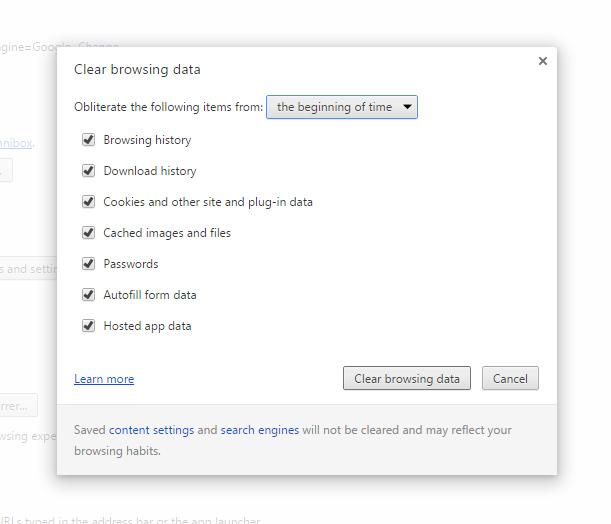Category : Review
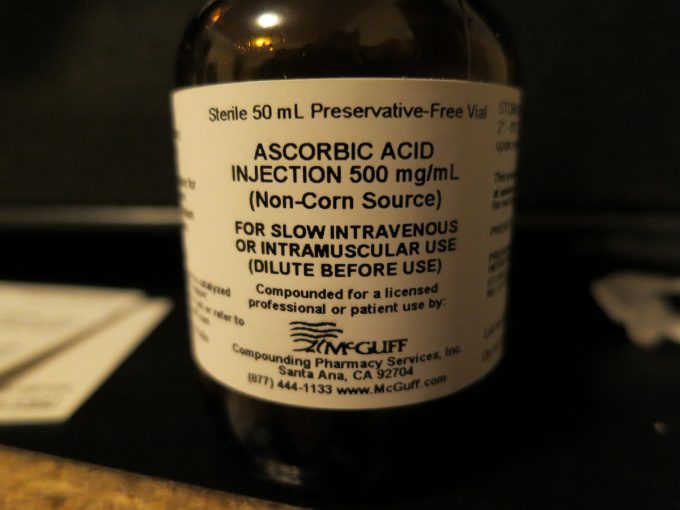
When people ask me what is most effective to keep the cancer cell count down to a minimum, I respond that chief among my medical therapies is the use of IV Vitamin C drip, or Intravenous Vitamin C.
To date, I’ve taken these treatments, which usually take a couple hours apiece, in both Mexico (Tijuana) and the US (Las Vegas). The cost in Mexico: $100. In Las Vegas: $160. In other words, Las Vegas is comparable enough cost-wise that the extra $60 is still a savings on the travel costs to Mexico, if you are just going for a standalone Vitamin C IV drip (which, at times between trips to Mexico for more all-inclusive health services, is the case).
The treatments themselves involve a needle-stick into a prominent inner-elbow vein, followed by the drip itself, which comes via plastic tube down from an IV bag, from which 50 grams (my dose, specifically) of Vitamin C is delivered, straight into my bloodstream.
Its actions are well-known…here are a few of the highlights:
- Chemotherapeutic action: It is a great cancer-fighter, because peroxide is created in the blood. This is due to the response of cancer cells to the Vitamin C, which is to create said peroxide. Normal cells do NOT make peroxide like cancer cells do in reaction to Vitamin C – making Vitamin C IV drip therapy a highly-effective, highly-targeted therapy. If you’ve studied Otto Von Warburg’s contributions to our collective knowledge about cancer, you know that cancer cells are anaerobic and that oxygen will kill them – and peroxide in the blood for raising oxygen levels is nothing new.
- Anti-inflammatory: Aside from the stress hormone cortisol, inflammation is enemy number one of good health. Inflammation plays a role in cancer and countless other disease processes, and Vitamin C IV can ameliorate this greatly.
- Heavy metals detoxification: Vitamin C IV is given to me by American Bio Dental in Tijuana, Mexico, for the purpose of keeping heavy metals from re-depositing in my system while undergoing mercury amalgam removal. Detoxification from these was very necessary in my case to even begin relieving my body from cancer growths, that is how toxic I was.
- Digestive & renal system bypass: Vitamin C IV drip goes straight into your veins, so there’s no going through the digestive and renal system barriers, which can limit the amount of Vitamin C that actually enters the system. This means blood levels of Vitamin C which are higher (and therapeutic) versus those which would be limited by the digestive and renal systems (and thus are lower and less effective).
I know quite a bit about that last one, having had some kidney weakness rear its ugly head from time to time. The desert environment of Las Vegas provided the treatment – namely beneficial minerals in small, steady amounts and liquids to match – but I can attest that at 50 grams per drip, I’ve never felt better.
Sensation-wise, it feels like an almost-high to me…I can literally feel my veins expanding to accommodate the IV drip’s contents. The first time I had this treatment…it was a bit disconcerting, it was like I was being “filled up,” but in a very good way 
As for frequency of these treatments, that depends on the person and where they are in their treatment, what their treatment goals are, how many treatments they can tolerate, etc. Even though I say here that the Vitamin C IV drip bypasses the kidneys – i.e., the renal system – large amounts in your system can still affect renal function. The lesson: It is always best to start small – and I know some individuals who started with 10 grams and worked their way up to more, once it became clear the treatment was beneficial. As with every other treatment, everybody’s different, meaning every BODY is different, and thus your individual profile, including your sensitivities, must rule the day.
When choosing a Vitamin C source, please take very good care. I know some people for whom the treatment worked great…until they changed their provider and ran into serious problems because they received a different source for making their IV drips. All ingredients – including additives and preservatives – should be disclosed in full to anyone receiving an IV drip – this is going directly into the veins. If something is in your drip that doesn’t like you, you’ll know it – and most likely very quickly, so don’t end up on the wrong end of that equation.
To this end, a wonderful doctor in Las Vegas gave me the bottle that he used to make my IV drip, fresh on the spot. Take a look at the following image, which shows the ingredients for a drip which made me feel great and has no preservatives:
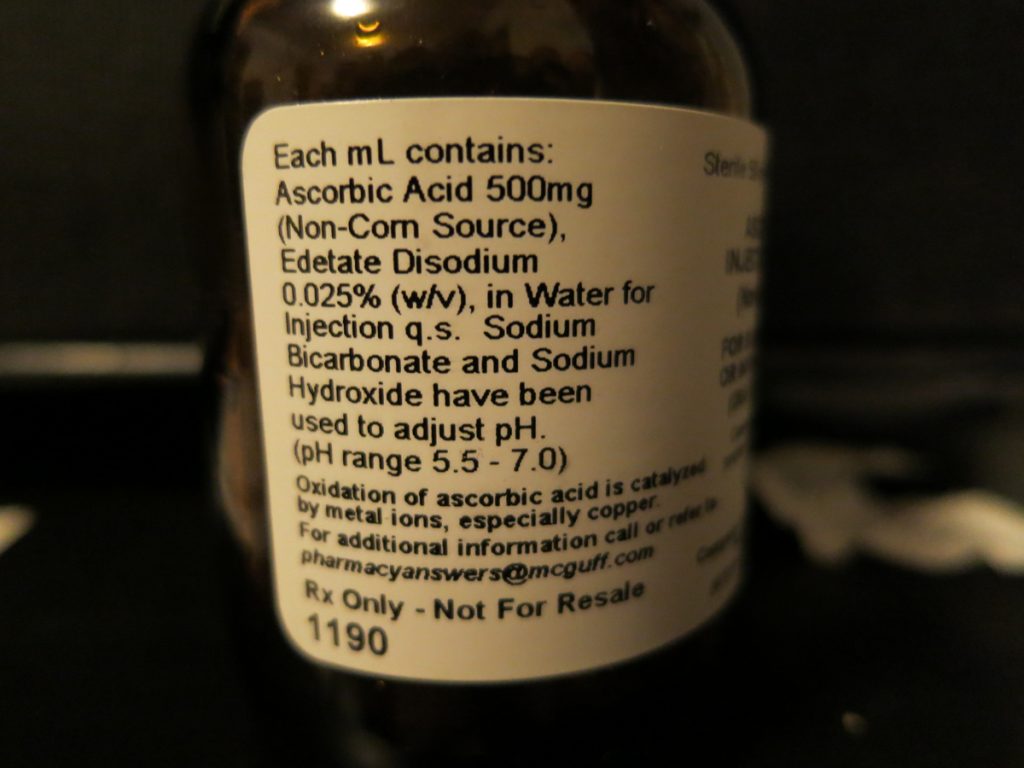
And of course, check out the image behind this content or at the very top of this post for the “front page” of that same bottle…and note where it says “Preservative-Free.”
So it really is worth checking out Vitamin C IV drip therapy as a possible cancer treatment. Cancer is one of those things where I don’t want to leave any possible stones unturned. Vitamin C IV therapy has worked many wonders for me, and it is possible it will for you as well.
As always, do the research. Know thyself! And find great doctors – as guides, not gods – to help you.
Yours in Great Health,
Alison
This past weekend, I came across a blog post that I’ll say is easily one of the best articles I’ve ever read on the abortion issue.
The author, one Libby Anne, completely takes apart the sham that is misappropriately misnamed the “pro-life” movement, and does so with the deft that only one who came from that very movement can.
My take has always been based on the US Constitution – not to mention the environmental impact of unchecked human population growth – where Amendments 13 and 14 provide the strongest arguments (for me, it is not privacy, as there is no such thing as privacy anymore in the United States, witness Snowden’s expose).
Amendment 13 outlaws involuntary servitude, otherwise known as slavery. Placing all pregnant women in a state of involuntary servitude is not only in violation of said Amendment, it also creates an undue burden of carrying and birthing a child unwillingly in a country adverted strongly as “free.” It is either free for everyone, including pregnant women, or it is not at all.
Amendment 14 defines US citizenship as bestowed on those “born or naturalized” in the US; note that it does NOT state “conceived.”
I challenge any legislature to mandate a documentation of the date of conception for every living being in their jurisdiction. Perhaps the mess of expense and regulation in doing that will finally see a tax code that includes taxing churches for the privilege of all the politicking they engage in, including instructing their flocks who to vote for.
As well, I’d love to see a checkbox on every tax form asking if the filer considers himself or herself to be “pro-life.” They could check the box and in doing so, agree to be taxed at a higher rate so that services can be provided such that no woman ever has to choose abortion…at least for economic reasons. In a perfect world, this would already be the case, but if a supposedly all-powerful “god” really wanted to stop abortion, I kinda think he/she/it would have done so already.
And that is the best proof that we should stick to running the country in a fiscally responsible manner, not policing people’s bedrooms. I, for one, would love to see a full accounting of how much money has been spent on anti-abortion legislation and related activities since Roe v. Wade. I’m sure that money would be better spent on preventing abortion through things like free access to birth control and comprehensive sex education, instead of restriction and denial, which only results in more unplanned pregnancies, and thus more abortions.
That’s precisely the point Libby Anne makes, and she does so with blunt, unabashed thoughtfulness, taking a fearless, fact-based inventory in an almost confessional manner that someone seeking the path toward reason would do.
I’ve noted that no matter the health issue, whether it is abortion or cancer or even experimental back surgery, it seems there is always an anti-choice agenda behind it. With cancer, I see alternative and natural cures suppressed in the name of an industrialized medical complex hellbent on collecting money from pharma drugs, and same goes for the abortion option, where those blocking access to it are creating conditions where more and more expensive, unnecessarily taxpayer-burdening social services and infrastructure will be needed to handle unplanned pregnancies that could have easily been prevented. In an era where taxpayers are (ridiculously) funding Catholic hospital chains, this should come as no surprise. In the end it all boils down to two things: control and the flow of money.
Seeing as pregnancy can be as deadly and debilitating as cancer, it is with much pleasure that I share this article. As someone who has battled for my health and to make my own choices about how I treat cancer over the long term – even to the point of crossing international borders to exercise said freedom of choice. Until there is real freedom of choice in the US of A, so heavily adverted as “free,” I will continue my treks elsewhere and spend my money where my individual liberties as regards healthcare options are truly honored.
I hope Libby Anne’s excellent article gives you as much food for thought as it did me.
Yours in Great Health,
Alison
I first came across WhiteHat Security’s Aviator Web Browser a few months back when my computer was infected with a kind of malware known as Svahszdifides.exe.
My computer was slow as hell, there were ads popping up on every web page I visited that didn’t belong to the sites I was visiting, and this thing was blowing out my bandwidth like crazy, opening dozens of port connections at a time, basically compromising everything on my system. Sometimes, I even lost control over web pages where dozens of pop-ups appeared. And every time I tried to erase it, it came back via copying itself over and over, right back into the same damn folder I’d been trying to erase it from.
Removing it was a real bastard – it took MANY attempts using tools like FileASSASSIN, Revo Uninstaller, RegEdit and a few others – but finally, it was gone along with many other malware and adware files, nearly 500 in total.
It took five days to manually remove them all, and along the way, my research turned up some interesting advice: to rid my machine of browsers like MS Internet Explorer, FireFox – and yes, even Google Chrome. Articles I was reading explained that these browsers were so full of security holes due to all their “partnerships” with other tools and the like that I may as well be surfing the Web on a board made of Swiss Cheese.
Enter WhiteHat Security’s Aviator Browser, which I can honestly say has prevented the problem from recurring, though not without some trade-offs.
Choosing a PROTECTED window versus an UNPROTECTED one is as easy as clicking on the menu icon at the far right of the URL bar – by doing so, you’ll get a menu with all sorts of goodies and jumping off points to configure the Aviator Browser. Note in the image below the menu icon is greyed out when the menu is active:
 Aviator uses PROTECTED windows by default, and Aviator blocks the setting of cookies by default as well. Note the little cookie icon in the image to the left, right next to the green PROTECTED status indicator.
Aviator uses PROTECTED windows by default, and Aviator blocks the setting of cookies by default as well. Note the little cookie icon in the image to the left, right next to the green PROTECTED status indicator.
Not allowing cookies to be set might keep the malware noise down to a dull roar, but it will take some getting used to. Some sites will ask you to enable cookies just for that site, and if the site is trustworthy, by all means, go for it. Using Aviator, some sites may behave a bit differently than you’re used to, and yet others might give you a real run for your money when you try to log on.
Because of cookies not being set, you will have to become far more intimately acquainted with your passwords and logons – and I mean memorize them. Aviator does NOT autofill these in protected mode, which for me was a pain at first, but in the end a good thing. I changed all my passwords and organized them mentally such that I could recall them, and suddenly I got things done much faster and was far more organized because I had no more excuses for forgetting them.
You’ll note that some sites are finicky about Aviator. One would be eBay, which gives me the boot sometimes when I try to log in, along with a message about how important their cookies are. But I notice that if I log in again from their sign in page, I am often logged in on the second or third try, without having to cave in to their cookie requirements.
 EBay’s pages often trigger Aviator’s protections, as you see in the image to the left. The cookie icon is shown along with another icon to its right that indicates that plugins are being blocked on this page. Gotta love eBay for a great demo of intrusive activities!
EBay’s pages often trigger Aviator’s protections, as you see in the image to the left. The cookie icon is shown along with another icon to its right that indicates that plugins are being blocked on this page. Gotta love eBay for a great demo of intrusive activities!
On another occasion when I attempted to log onto my bank’s website, I was not able to stay logged in. Somehow, a cookie from their site had hijacked the browser’s usual PROTECTED status and inserted itself into Aviator’s history. This was easy to resolve by “obliterating” my entire browsing history “from the beginning of time” as stated in Aviator’s internal dialog box under “Clear Browsing Data.” Yep, a sense of humor helps :-). Check out the image below:
I’ll mention here that Aviator’s internals do look one hell of a lot like Google Chrome’s, and Aviator does use Google as its default search tool, which you can see on the screenshot behind this content (toggle the content on & off by clicking the circle with the “+” at the top right of this page).
So, yes, there is some cross-pollination with Google, but overall it’s not a bad thing. For one, it means that Chrome users will have an easy time using Aviator, due to the similar interfaces for changing settings. Aviator’s “Disconnect Search” – a tool from Google – is tops, and I’ve always liked the Google interface for bookmarks, which is practically copy-pasted into Aviator. Just click the star shape to the right of where it says “PROTECTED” and you’re there.
 Next, you might be wondering what the little burglar mask icon and the big “D” just to the right of it are for.
Next, you might be wondering what the little burglar mask icon and the big “D” just to the right of it are for.
The icon with the little burglar mask is a spoofer, which allows the user to spoof – or mimic – many different browsers via Aviator. Clicking on the burglar mask icon gives the user the flyout menu depicted in the image to the left. Note all the different interfaces you can choose from, with versions of each when you click on the browser name.
FYI, spoofing can be used as a network management tool to reduce traffic, thus improving performance by preventing strain due to limits on bandwidth. It can also allow Aviator to fool websites into thinking it is a different browser altogether, which may make some operations easier.
 Next, that big “D” icon, which has a little green subicon with a number in it. The number represents the amount of requests that the visited website is making to the browser, whether they be ad-related, content-related or analytics-related…0r even social-related. When the big “D” is clicked, Aviator will fly out a box with details about them all. Neat, huh?
Next, that big “D” icon, which has a little green subicon with a number in it. The number represents the amount of requests that the visited website is making to the browser, whether they be ad-related, content-related or analytics-related…0r even social-related. When the big “D” is clicked, Aviator will fly out a box with details about them all. Neat, huh?
Overall, this browser called Aviator ROCKS. It does what I need – namely, to stem the onslaught of adware and malware infections, and I have no intention of going back to IE, FF or even Chrome at this point. Life with less aggravation = better health. It really is the little things like this, because they can sure pile up, given how much time we spend online these days.
Here’s hoping that Aviator stays as good as it is right now. It has its quirks and imperfections, but it has kept the chaos on my machine down to next to nothing. This has saved me valuable time spent ridding my system of malware and adware, time I can spend doing stuff I’d rather be doing, like writing blogs for one.
If you want to give Aviator a try, it can be downloaded here.
Yours in Stress-Free Computing and Great Health,
Alison
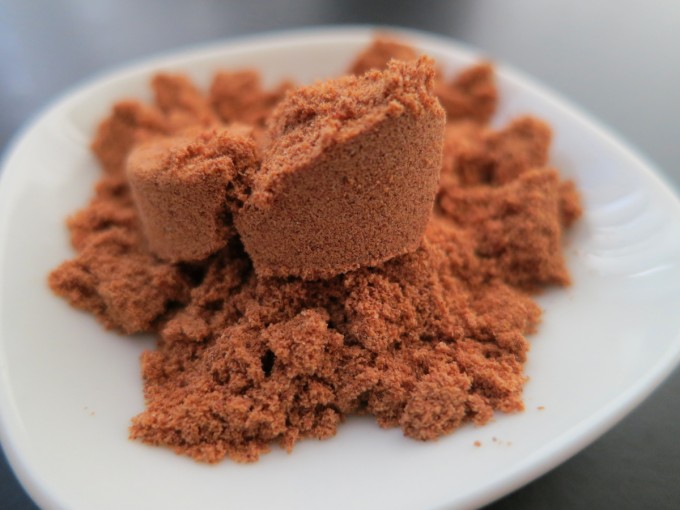
I first started eating fruit seeds some time ago after being told they contained beneficial and cancer-fighting substances like laetrile, which is found in apple and apricot seeds.
In 2012, while dealing with the nipple cancer lesion in my left breast, I came across a recommendation to use ellagic acid to help my body fight off tumors, my naturopathic MD in Los Angeles telling me that as long as I had enough antioxidants, I was protected.
 Ellagic acid is a naturally-occurring phenolic antioxidant contained in many fruits and vegetables, and had been recommended to me as being suitable for my needs. At first, I tried a supplement that combined ellagic acid with graviola, which had long been my standby for helping fight cancers.
Ellagic acid is a naturally-occurring phenolic antioxidant contained in many fruits and vegetables, and had been recommended to me as being suitable for my needs. At first, I tried a supplement that combined ellagic acid with graviola, which had long been my standby for helping fight cancers.
To my disappointment, the supplement didn’t agree with me – it was too concentrated for me at a time when I was also doing a very intense, year-long heavy metals detox on a three-days-on/four-days-off schedule using zeolite, cilantro and blue-green algae, including spirulina and chlorella.
The positive changes taking place in my body during this detox were nothing short of spectacular, and as bodies so often do, mine was changing. For the better. For me, it meant I had less and less use for supplements in general, including ellagic acid in concentrated supplement form.
In short: I needed to find something more food-like and body-compatible, rather than a refined and super-concentrated supplement.
I researched a little deeper and found that ellagic acid had precursors known as ellagitannins, that provide quite a bit more bioavailability in a much closer-to-nature form. That sounded good to me!
Enter Raspex Red Raspberry Seed Powder, made largely from a variety of the berry called Meeker Raspberries – those which contain the highest levels of ellagitannins that break down into beneficial ellagic acid in the body.
This is a powder made of finely-ground Meeker raspberry seeds, and is a beautiful berry color. Mixed with an avocado smoothie, it’s fantastic. Stirred into plain organic yogurt with a little stevia produces an almost parfait-like dessert item. I keep a container of it handy at all times and keep it refrigerated as recommended. I can think of no better way to get tons of beneficial antioxidants into my system.
That said, the powder is a bit hard to swallow by itself or with plain water – it does have some grit to it and unless it’s mixed into something, it can be rather scratchy. But that is a small inconvenience for the amount of antioxidants this lovely powder delivers into your system.
It has become a part of a regimen that includes Chinese and Naturopathic medicine, diet, herbs, exercise – pretty much all the things you’ll read on the My Cancer Protocol page on this site, which I update periodically. As always, do your own research and find what works for you!
I buy mine online from either SMDI or Amazon. It retails for around US $39.95 (or therabouts) and comes in a one-pound tub that can be popped right into the fridge upon arrival.
Yours in Great Health,
Alison
Today I’ve added the first page under a new section of the site, called “Top 10s,” where I include all my raves and faves. Today’s entry, Alison Lorraine’s Top 10 Fave Films, consists of reviews of my current Top 10 favorite movies of all time.
I’ll be filling the Top 10s section up with all sorts of goodies as I come across them, whether they be film or food or whatever form they may take.
Enjoy!
Yours in Great Health,
Alison
PS – Here’s a short teaser of just the first review you’ll see…
1 The Shawshank Redemption :: If life’s got you in a cage – of any sort – watch this film.Shawshank is ranked Number ONE on IMDB, which proves that the wisdom of the crowds trumps that of paid entertainment industry hacks who claimed it had the wrong tongue-twisting title, would never succeed because it was a prison film, an indie film, or this or that, all of it falling on the deaf ears of those whose good taste lifted it above the din of the so-called tastemakers…[more]
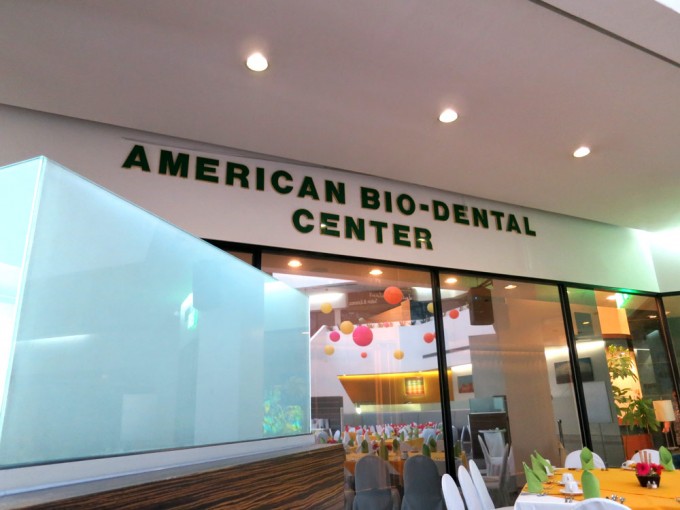
[This is a blog on my experiences travelling to and at American BioDental, a Mexican dental clinic specializing in holistic dentistry and alternative treatments for cancer, such as IV Vitamin C.]
While researching on treatment tactics for the breast lesion I was dealing with in 2012 and 2013, I found dental revision being recommended over and over as a foundation-level plank in the overall platform for beating cancer. Many self-directed cancer treatment sites even go so far as to say it may be enough in itself to clean up the dental environment to see big improvements, so my search was on!
Who knew this would be my view when I got there?

When looking around for a dentist to clean up the remaining mercury mess in my mouth, I sought four things:
- Simpatico. That whole feeling of likeability and ease of working together that is critical to any doctor-patient relationship, or should be. I’m not much of a yes-person and I sure don’t like being dictated to, then charged for it.
- Holistic. To a fault here, after years of having leaking mercury in my mouth, not by choice and which were never vetted as compatible with me…and, ummm, mercury isn’t compatible with…humankind.
- Qualitative. I wanted the best material my money could buy – and the least harmful, aka the most biocompatible. Anything being permanently placed in one’s mouth will certainly affect overall health. Profoundly.
- Affordable. I live in the US and own a body. Need I elaborate?
After much research and talking to various people, I chose American BioDental Clinic, located in Tijuana, Mexico. They hit favorable notes for all four of my requirements – whenever I called them, they happily explained everything and answered all my questions, including border-crossing options and then some. They specialize in holistic dentistry, including the removal of mercury, and I’d been in touch with several fellow survivors who’d gone there and reported success.
When I visited their website, I saw very reasonable pricing, and even more importantly, transparent and right out there for all to see. No having to call around and hear about payment plans that would have me in hock for years to come in the Great American Transfer of Wealth for what should be reasonably priced healthcare.
When I got to the Clinic, I saw that yes, their facilities were top-notch and yes, they used the best materials on the market for their patients – even encouraging them to get a biocompatibility test if they were dealing with cancer (my results).
After the initial intake and panoramic x-ray, I was told I had 23 teeth that needed work, including new fillings, replacement fillings, several inlays and a surgical mercury tattoo removal. Not being too much of a glutton for punishment, I arranged the work to be done in two parts – later that day, the right side of my mouth, top and bottom. Several weeks later, the left side. And then a third, very short visit for a quick follow-up on one problem tooth the dentists at the clinic saved with their excellent work, but told me to keep an eye on.
While under the drill, I also had Vitamin C IV drips – 50 grams each time – well-known to be extremely helpful for the immune system and a great treatment for cancer. Additionally, IV Vitamin C has the benefit of keeping re-exposure to heavy metals to a minimum while dental work is being done.
In my case, there were a lot of mercury tattoos left from half-assed amalgam removals not done safely or completely (but very expensively!) in the US back in 2008. After those, I’d thought – I’d hoped – that my problems were over. But they weren’t, as evidenced by ongoing cancerous lesions on my skin and left breast. Since there was still mercury residue in the form of grey-colored areas on my teeth and gums, along with loose fillings and cracks, the effects were still playing out in my system to my detriment.
Dental work and detoxes were in order, as soon as possible and within a reasonable budget, because it seems patients in the US are out of luck in getting mercury-related dental revisions paid for by the system that visited them upon us all. It would be akin to an admission that there was a problem, which I can only guess is a real no-no. It was only fitting that I took my business elsewhere.
So, on to the nitty gritty details about my trip(s) down under the USA’s southern border…
Crossing the Mexican border. I park and walk across, and for this, I take the 805 south to San Ysidro – the “LAST US EXIT” – the signs are very clear and say just that. At the end of the off-ramp, hang a right, go down the little hill, and what I usually do at the first intersection is make a right, then another quick right straight into a pay-as-you-go parking lot (cost, as of this writing: $7 per day). Park, and then you can either walk to the border crossing, or pay for one of the many rickshaws, etc., that come around looking to help out (plenty). I just walk it, it is not that far, and I don’t usually have more than a backpack.
Walking out of the parking lot toward the Mexican flag…which is right under the American flag in my pic…


Once out of the lot, cross the street and hang a left to the intersection (pictured below), where you’ll cross the street using the crosswalk (shown below). After crossing, go straight…

You’ll come to the pedestrian bridge that takes you back over the 805. You’ll see other people going where you want to go, so just follow them over the highway

You’ll come to a set of stairs, and at the bottom, go to the right and walk toward the train station area:

You’ll also see busses and lots of people, taxis and the like. The walkway to Mexico goes in between two buildings, then behind them and to the right. There’ll be plenty of others walking this route, and you’ll see this:

…and then you’ll see this…

…and you’ll realize that all the jokes are true: There really is a revolving door between Mexico and the US, lol! Two, in fact…

The revolving doors are the way to the “customs” area – and I put this in quotes, because it’s pretty basic – it is just a couple of revolving doors under the “MEXICO” sign (see the image above) that lead you into a small room where (sometimes) your bags are checked and (most of the time) you will see a member or two of the Mexican military standing guard as you exit.
After you exit customs, you’ll cross over the same highway in the other direction – and be warned, the path is just as circuitous as on the American side – to the taxi cab area. Per my previous advice, follow the crowd, they will lead you well. And note one of the first things you see on the Mexican side is a big pharmacy. Supply and demand. Go figure.
The taxi ride to the Grand Hotel Tijuana, where I usually stay when I have an appointment at American BioDental, is around $7 – 10, and takes around 10 minutes.
At the Grand Hotel Tijuana. This is a veeeerrrry niiiiiice hotel! You’ll pay the same for a shithole in LA, and with that, you’ll start to learn why over a million Americans call Mexico home, probably many of them “illegally.” The rooms are very nice and clean, have great bathrooms, and if you’re on one of the upper floors, you’ll have a fantastic view to boot. They have a very nutritious morning buffet, with complete proteins like eggs, chicken, beef, etc. You will not starve.

The water. Okay, had to get to this, and I’ll say this first: I drank the water freely on my first visit, and a few days later, had the most thorough and inexpensive full-body detox I’ve ever had. Otherwise known as Montezuma’s Revenge. Not very pleasant, but all-inclusive to a fault. The next few times I went, I was more careful, and I took a strong probiotic called Primal Defense with me. I think Saccharomyces Boullardi would also work well, just make sure to take enough of it. There is filtered water in the rooms, as pictured below:

But…you know how it goes: Somehow, something always goes awry. The tea water isn’t quite boiled long enough to kill everything. Or, you brush your teeth and forget to use the filtered water. So I’m careful, and at restaurants, I usually order a mineral water called Ciel – it is canned and entirely (…uhhh, at least as far as canned drinks go) safe:
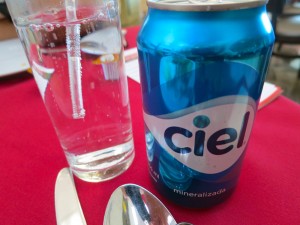
Going back to the US (do we have to?). One of the Alessandros, aka either American BioDental’s head doctor or his son, usually drives me and a few others back across the border. They usually leave once or twice per day, and this is VERY preferable to walking back across, as they have frequent crosser permits and it’s usually pretty painless. Take my word for it: Crossing into Mexico is a piece of cake. Crossing back into the US is an overblown exercise in paranoia. Go, and you’ll see for yourself.
Yours in Good Health,
Alison

Yesterday, I attended a well-thought out, fact-and-numbers-based lecture given by Dr. Ken Osgood at the Unitarian Universalist Church in Las Vegas, the full title being the following:
The American Health System Dysfunctions – How We Got Here and What Needs To Be Done To Fix It
Speaking as someone with extensive experience with the US Healthcare system’s dysfunctions (and having to pay with no small amounts of money and time to resolve them), this was a presentation I could sink my teeth into where I learned quite a bit.
The lecture’s format traced the last 100 years of the American Healthcare System, how it came about and how it became the monster it is today. At the end, the presenter gave us all practical ways to effect changes in the system itself, starting from the patient’s perspective (i.e, the way it should be, but not the way it currently is). The message I got loud and clear: the system originated with us, and it has only grown out of control with our permission.
During the lecture, I learned that in America, we almost had a single-payer system. Nearly 100 years ago in 1920, a vote on a national healthcare system – akin to those in Europe and other nations – failed by a count of six votes.
If I could go back in time, no tellin’ what I’d do.
Flash forward to 1945 and a World War II-winning US, defined by a highly-skilled workforce that US industry could not afford to compensate accordingly and voila! We got socked with our employer-based healthcare system, with employer healthcare benefits coming in as an alternative to reasonable pay. Following that in 1965 came the introduction of the “third wheel” between patient and provider in the form of the fiscal intermediary concept. At the time, this included Medicare and Medicaid and has grown to include insurance companies, lawyers, courts, legislators (and legislation), hospital systems and others all grabbing at pieces of the big pie.
Here are some of the results of too many fingers in that pie, the figures shocking, but not surprising:
- 23% of the insurance premium payments you spend your hard-earned dollars on go to nothing more than processing money.
- Doctors in the 1970s saw patients for 10 minutes or more per visit. It is currently down to two minutes. (I’ll note here that the doctor whose wrong prescription for antibiotics in my case saw me for all of two minutes – and it was these two minutes that changed my life forever. A simple gram negative/gram positive test was indicated, but not done.)
- Per Dr. Osgood, if the US Healthcare System worked well, it would consume less than 8% of the US Gross Domestic Product. It is currently at 19+%.
I’ll let you do the math on that last one as to how much of our GDP is simply attributable to health-related corruption and waste.
There are also structural issues preventing effective healthcare delivery – one, too many hospital beds, and two, too many physicians. From the presentation:
- The current number of hospital beds-to-population ratio is 3/1000, while less than 2/1000 is the actual need level.
- The current physician-to-population ratio is 220/100,000, while Kaiser Permanente’s model produces better than average outcomes at 125/100,000.
Using deductive logic, is it any wonder we are so damn marketed to in this country over healthcare? There is too much of a supposedly good thing, but somehow less of a real choice for all of us, so when I say the system is rigged (and this is my fallback expression regarding US Sick’n’Pay), there are the facts to back it up.
Dr. Osgood’s lecture concluded with the concept of a Medical Home – that is, a single-point-of-entry system for patients with features including continuity along with patient-centered, comprehensive and compassionate care. And importantly, one that doesn’t divide (and therefore fracture) its delivery system among so many entities that it makes it difficult to establish a qualitative, long-term relationship with a caring, ethical and well-educated healthcare practitioner where trust can be built.
This brought his final point home: that it is up to us to insist on what we need from doctors and from the system. Namely that We the People need to forge that long-term relationship with a good provider, and minimize the use of urgent care, hospitals and others as much as possible, in other words, put the family physician back where he or she belongs.
We need to be writing down all our questions (and insisting they are all answered while on a visit). And we’d be wise to have an advocate along for the ride when we deal with the system (I always bring someone along to doctor’s and other medical visits just so I have a witness). And I’ll chime in here with my usual: doctors as guides, not gods, with treatment options covering the whole spectrum, not just what’s promoted by Big Pharma.
All in all, this was one of the more memorable lectures I’ve seen on this subject matter, and it was delivered with care by Dr. Osgood, who actually had the audacity to apologize to me for the system after I told him my story.
Yours in Good Health,
Alison

It was very fitting how I learned of Breaking Bad. A friend and fellow cancer fighter, whose own battle started with melanoma – and later, stage 4 prostate cancer and then some – told me about this cool new show he’d been watching. It featured a very smart, but very broke school teacher working two jobs…and he had lung cancer on top of it all. In other words, someone who’d had enough.
Ding.
He’d had it to the point where he’d started making and selling meth to pay medical bills and provide for his family…and to make up for the deficits he saw in his own existence.
Ding.
The main character of the show, one Walter Hartwell White, played to perfection by Bryan Cranston, had also felt the sting of the Big Fuck You Over Money via two former business partners, who’d become billionaires on the back of Walter’s chemistry genius after he left the company. He went near-broke, barely eking out a living as a schoolteacher moonlighting at the local car wash. And now, he wanted his cut of the Big Pie. However he could get it.
Ding! Ding, ding, ding-ding-ding-ding-diiiing!
As the description came out of my friend’s mouth, I was immediately hooked. One cancer survivor who’d been screwed over telling another about a show featuring yet another. There was a love triangle in there somewhere.
As I started to watch back episodes to catch myself up, I saw in Walter White shades of yours truly.
Firstly, cancer. The day of my diagnosis was a game changer. I was never the same. Never looked at things the same way again. Did some things I’m not proud of.
Most of the past years since my diagnosis, I’ve not had access to “the system.” Sometimes I had health insurance, sometimes not. Seeing as I prefer holistic healthcare and treatments other than those offered by Big Pharma-racketed US Sick’n’Pay, I think that was in many ways for the best. For me, it was a good thing not to have access to too many pharma drugs. All they ever did was crash my immune system, making me sicker with each pass. But not so good when I needed a decent and timely diagnostic. Or necessary surgery and dental care.
Secondly, career frustration. Majorly. Won VH1’s Song of the Year, twice. Sold over 100,000 units of my tunes, largely soundtrack and overseas indies. Still no big, life-changing deal, and way too many questions…but I sure found out what “several layers of record label accounting” really means.
Thirdly, financial devastation. Even working through the Big C for the Big Dream. Flashback to 2004. Three jobs. Made Bush proud! Lesson: ‘work hard and you’ll make it in America’ is a great soundbite, but don’t ask me to believe it after all I’ve seen and experienced. Proof in the form of a million-dollar music publishing deal would be far more convincing and practical.
LOL! Don’t laugh – that was my original goal in entering The Biz. That, and access to decent medical. Such was life in these United States.
But now, like Walter White’s ever-increasing monetary goals, mine, too, have grown. Because as anyone who’s experienced the Big Fuck You Over Money can tell you, it puts a fire under your ass. Because life should be more than chasing illnesses, mere survival and the constant mind-chatter of rotating what ifs.
The reason for Breaking Bad’s success is that it touched those same raw nerves in so many millions of others. We all want to Break Big. And some are willing to Break Bad to do it. I can certainly relate.
Which brings me to this point: Breaking Bad was damn close to perfect. So damn close to perfect. Vince Gilligan of X-Files fame made it perfect in every way, except for one little, BIG thing.
I think back to the episode where Walt’s doctor is discussing alternative treatments for cancer – and the off-the-main-drag-but-still-Pharma-biased doctor’s canned response came in like a rainstorm on a parade when he mentioned his uncertainty about the efficacy of such treatments.
So, yes, Hollywood manages to mention alternative treatments. But then there’s the suited Dr. Deus ex Machina, telling us all about a lack of efficacy associated with them.
Hmmmmm.
Anyone else smell the Big Pharma bucks behind that?
Because honestly, that hasn’t been my experience. In fact, just the opposite. Pharma drugs were what created my Big Mess in the first place. Treatments outside of those pushed on us by Big Pharma have largely gotten me back to some semblance of health. But I certainly am still chasing things down, given that FDA-approved drugs almost deep-sixed my skinny ass.
Thus my request to Hollywood: Why not come up with a show that follows a cancer-fighting character, preferably someone who, in “real life,” has or had the disease – WE need the money. And please, make the protagonist someone using alternative, holistic medicine – if alternative even applies to treatments existing thousands of years B.C., aka Before Chemo. Make it a story about someone for whom the system has failed, who realizes the only way out is to Break Brave and follow his or her gut instincts. Kinda like I – and a lot of others – had to.
When – IF – Hollywood Breaks Brave (and decides to go truly free market where cancer treatments are concerned), I’ll be all-in. A 100% FAN! Behind-the-scenes experience tells me that many celebs use alternative, holistic healthcare, but still do and say whatever their corporate paymasters order them to do and say for a paycheck.
Tragic. And certainly not role model material.
When both Hollywood and doctors serve as guides, not gods – and no longer serve Big Pharma to the exclusion of all else over money – that will be the day. And if the day comes when I see universal, single-payer, sliding-scale healthcare featuring a full set of choices for cancer treatments in America, I’ll be first in line.
Yours in Great Health,
Alison

